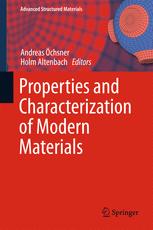

Most ebook files are in PDF format, so you can easily read them using various software such as Foxit Reader or directly on the Google Chrome browser.
Some ebook files are released by publishers in other formats such as .awz, .mobi, .epub, .fb2, etc. You may need to install specific software to read these formats on mobile/PC, such as Calibre.
Please read the tutorial at this link: https://ebookbell.com/faq
We offer FREE conversion to the popular formats you request; however, this may take some time. Therefore, right after payment, please email us, and we will try to provide the service as quickly as possible.
For some exceptional file formats or broken links (if any), please refrain from opening any disputes. Instead, email us first, and we will try to assist within a maximum of 6 hours.
EbookBell Team

0.0
0 reviewsThis book focuses on robust characterization and prediction methods for materials in technical applications as well as the materials’ safety features during operation. In particular, it presents methods for reliably predicting material properties, an aspect that is becoming increasingly important as engineering materials are pushed closer and closer to their limits to boost the performance of machines and structures. To increase their engineering value, components are now designed under the consideration of their multiphysical properties and functions, which requires much more intensive investigation and characterization of these materials.
The materials covered in this monograph range from metal-based groups such as lightweight alloys, to advanced high-strength steels and modern titanium alloys. Furthermore, a wide range of polymers and composite materials (e.g. with micro- and nanoparticles or fibres) is covered. The book explores methods for property prediction from classical mechanical characterization-related fields of application, for example, from wear, creep, fatigue and crack growth, to specific surface properties, to dielectric and electrochemical values. As in all fields of modern engineering, the process is often accompanied by numerical simulation and optimization.